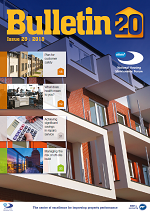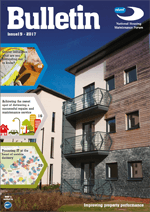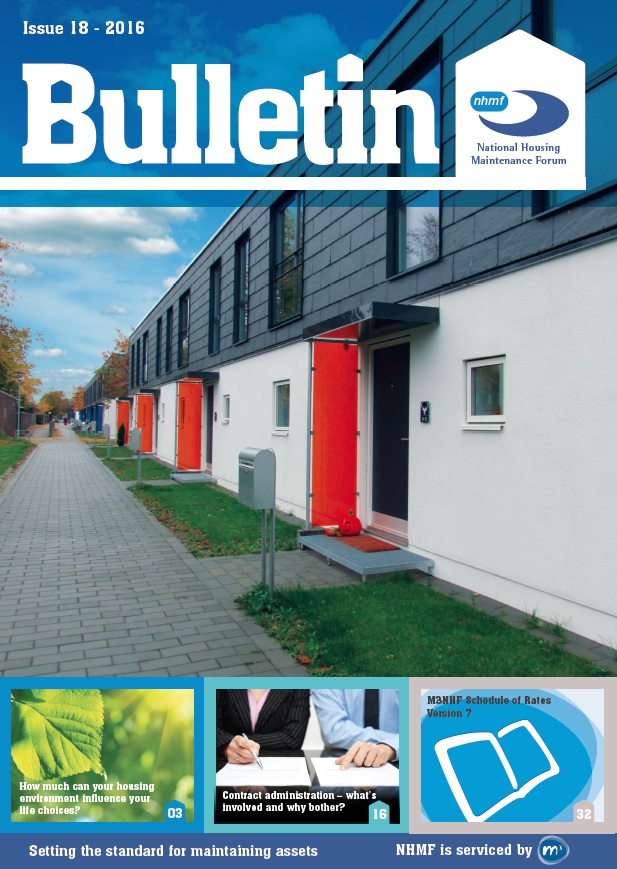NHMF best practice
These two new best practice sections will help social landlords to maintain quality homes in an increasingly challenging economic environment. The Compliance Section has a set of topical guides summarising social landlords’ responsibilities for meeting essential statutory health and safety requirements and explain how to do this economically and efficiently. The Fuel Saving Section explains how to include a fuel saving strategy as a key aspect of an organisation’s business plan. The Guide then sets out how to develop a practical improvement strategy as an integral part of the asset management programme and how to successfully deliver the improvements and manage the risks. There are also best practice training courses which relate to this guide.
Executive summary
Drivers for fuel-saving home improvements
Reducing the fuel used in the housing stock should be an integral and essential part of every social landlord’s business plan. This guide focuses on fuel saving home improvements that will reduce residents’ fuel bills and ensure homes continue to be affordable. The business plan should include a fuel saving strategy that goes beyond minimum statutory fuel poverty standards and is driven by the organisation’s own objectives and business needs rather than chasing money from ever-changing and uncertain external funding schemes.
Developing a Fuel Saving Strategy – agreeing the need
A housing energy strategy, to be effective, should be fully supported by senior management with ownership or buy-in from across the organisation. The Governing Body must be persuaded of the business and regulatory drivers. Landlords need to understand their stock, know which are the least energy efficient homes and why, and what additional investment is required to improve them and the resulting benefits.
Establishing fuel-saving targets
To develop a comprehensive and effective fuel saving strategy a landlord needs an accurate knowledge of the energy performance of its housing stock. It needs to understand its stock’s current energy performance, what standards might be technically attainable and affordable, the improvement options that would have to be implemented in order to meet proposed targets, and what they would cost. Housing stock profiles, which focus attention on the least energy efficient dwellings, where the return on investment in improvements is greatest, are useful tools for asset management and business planning.
Presenting the fuel-saving strategy to the Governing Body
The results of the detailed analysis to establish the proposed fuel saving targets should be presented to the Governing Body in social business terms and with quantified outcomes. Business risks arising from the current asset management programme should be identified, quantified and assessed. Good, up-to-date demographic information will be an important aspect of any assessment since pensioner households may be more at risk of fuel poverty if they are living in former family homes. Fuel-saving targets and funding should be built into long-term business plans and budgets to support fuel-saving improvements. A strong social business case is required to secure the necessary budgets to improve existing stock with the challenges on available finance and the pressure to build more new homes. The whole organisation, not just the Governing Body, should recognise the benefits of reducing fuel use and be committed to delivering it. A member of the Governing Body could be made responsible for championing the fuel-saving strategy and ensuring delivery.
Funding fuel-saving improvements
Since UK public funding is limited, especially in England, housing organisations should plan to fund fuel-saving measures as integral elements of their asset management programmes based on the organisation’s business objectives.
Delivering fuel-saving improvements
An integrated approach to delivering fuel-saving improvements, embracing both technical and organisational aspects, is usually more cost-effective than implementing retrofit as a separate programme. The development and implementation of a fuel-saving strategy should be approached as a cross-departmental project so that everyone in the organisation understands the overall aims and objectives and what needs to be done.
Managing risk and ensuring quality
Improving the energy efficiency of existing housing is a risky business that needs to be understood and managed to ensure good quality results. Work that is intended to deliver fuel saving improvements is different from traditional maintenance and refurbishment work and carries technical risks that need to be managed. It involves the integration of new materials, products and systems using installation processes that are new to managed housing. To achieve significant reductions in fuel use, fuel cost and carbon dioxide emissions a range of improvement measures have to be installed in each house, either all at once or in coordinated stages according to a medium-term plan. This guide explains how risks can be managed in order to ensure successful outcomes, and describes a risk management methodology developed for a large-scale retrofit programme.
Next Chapter




